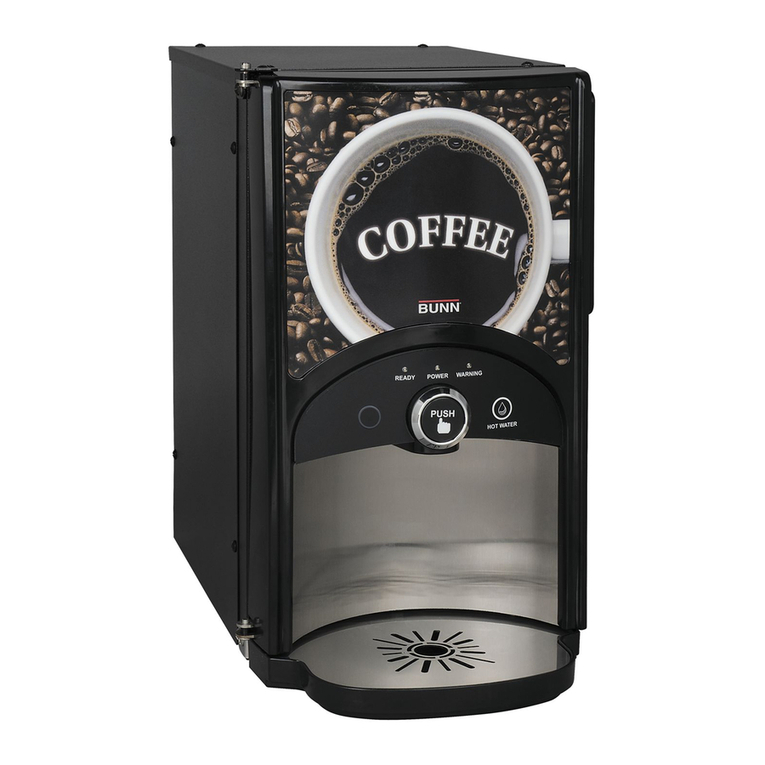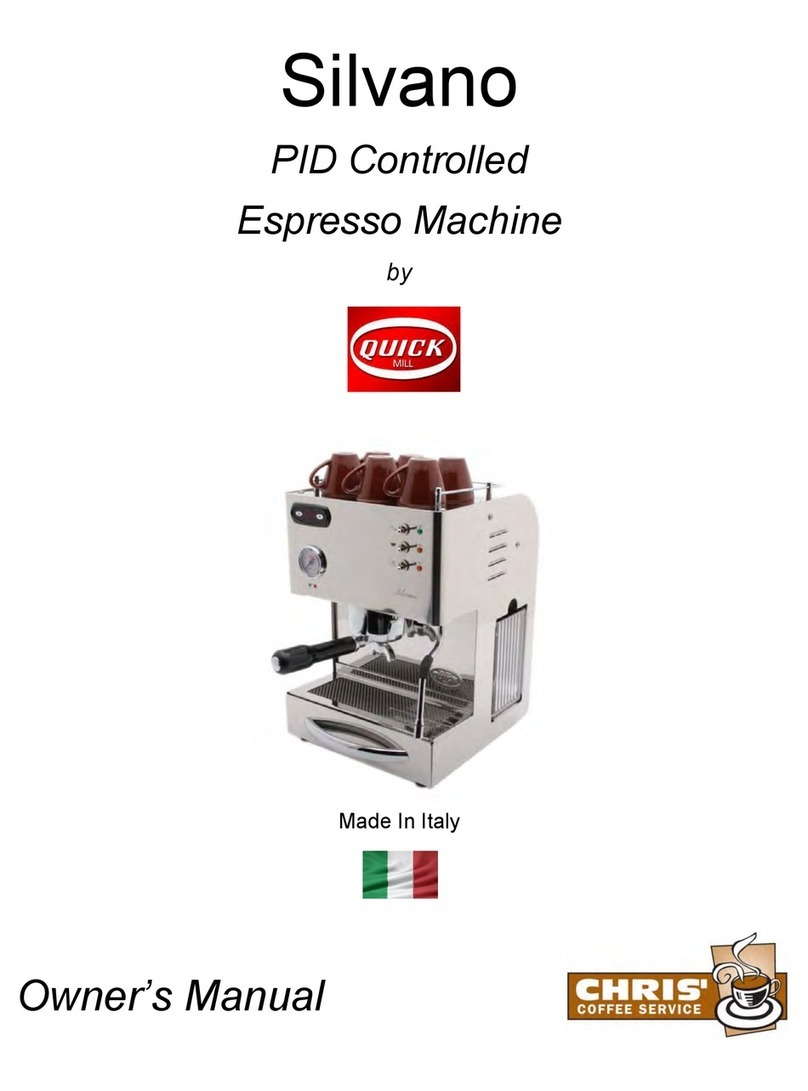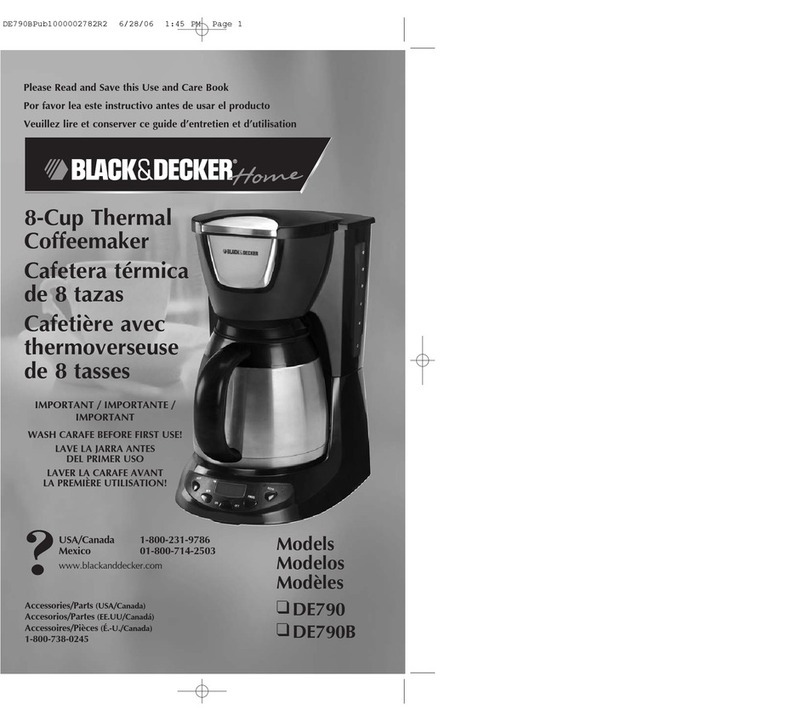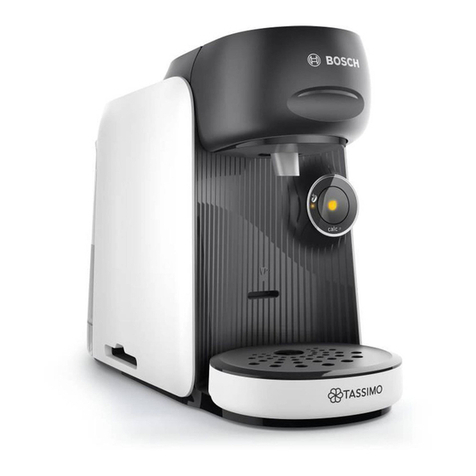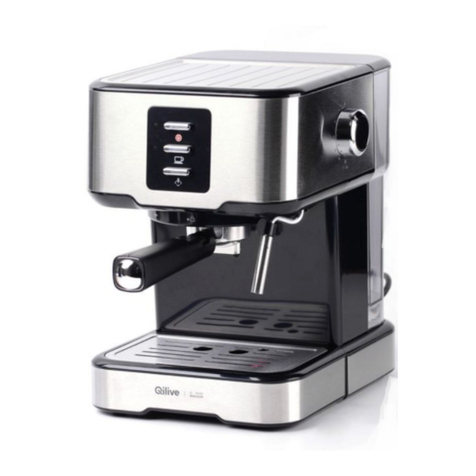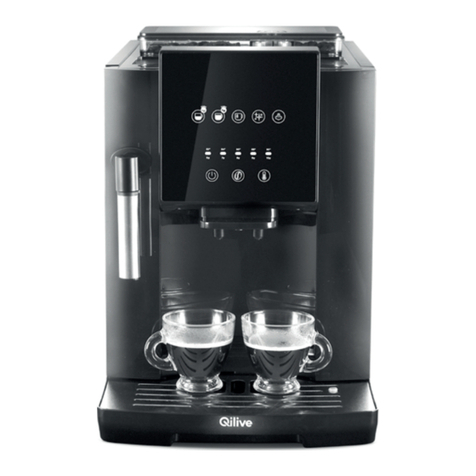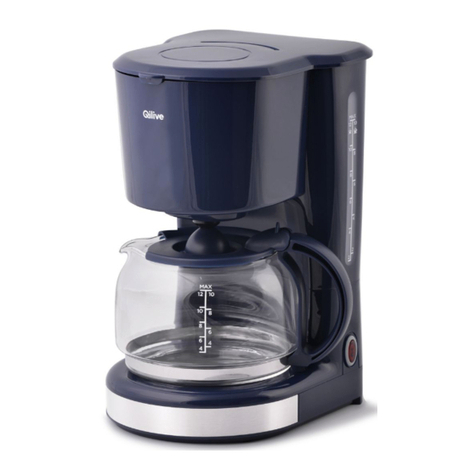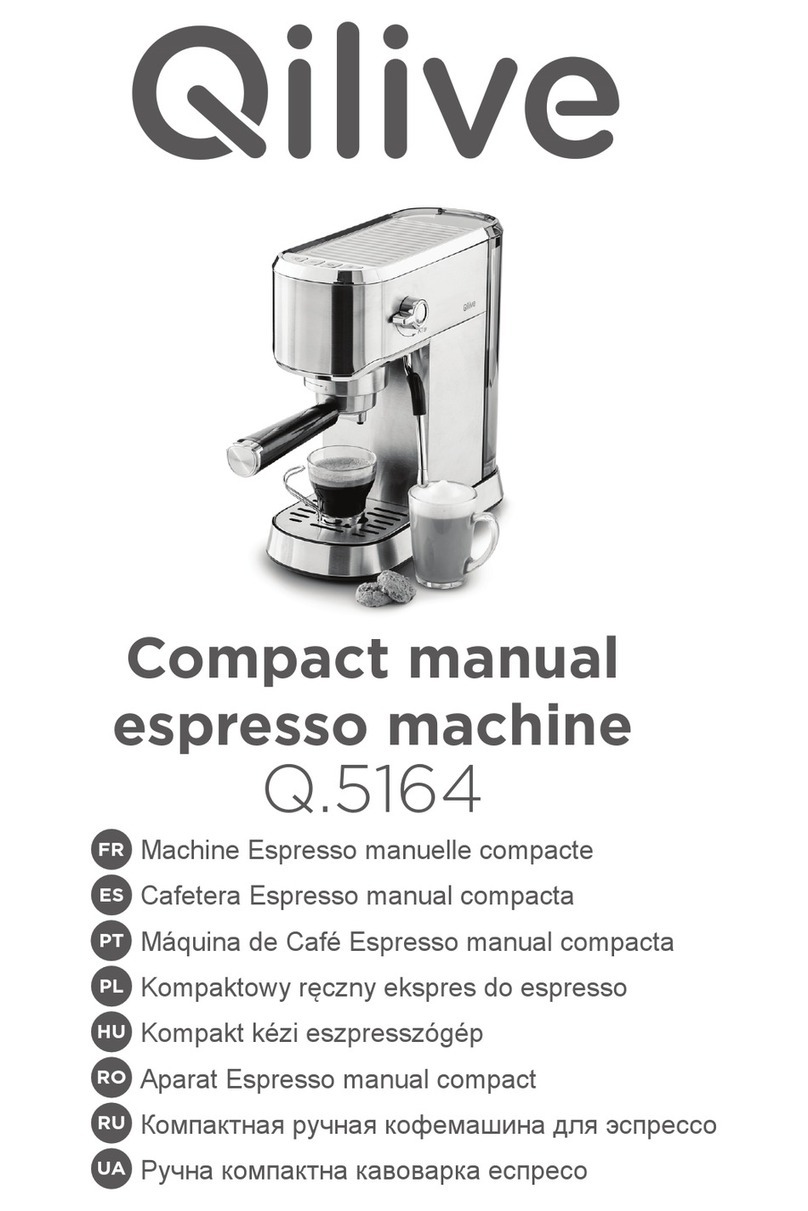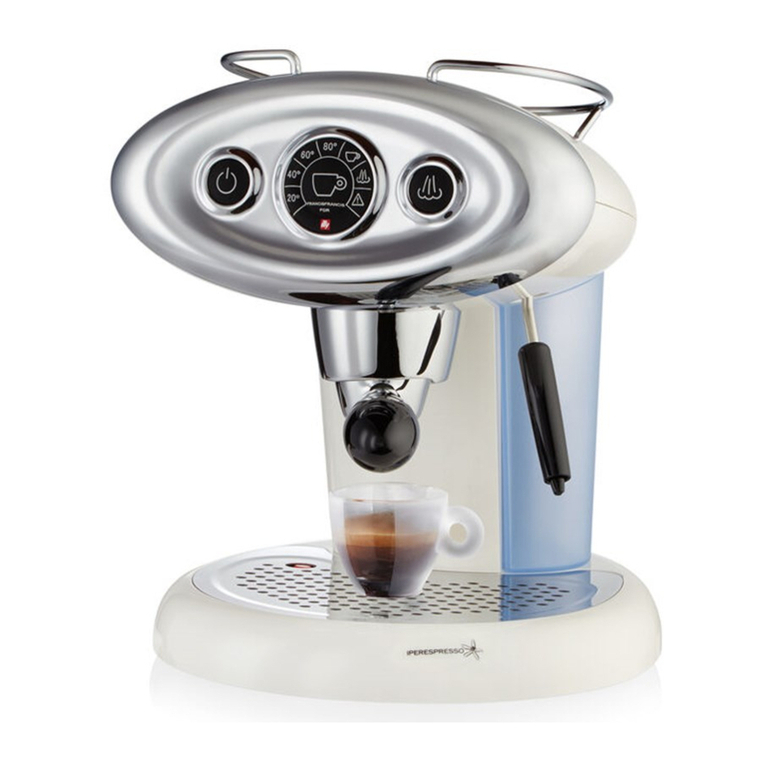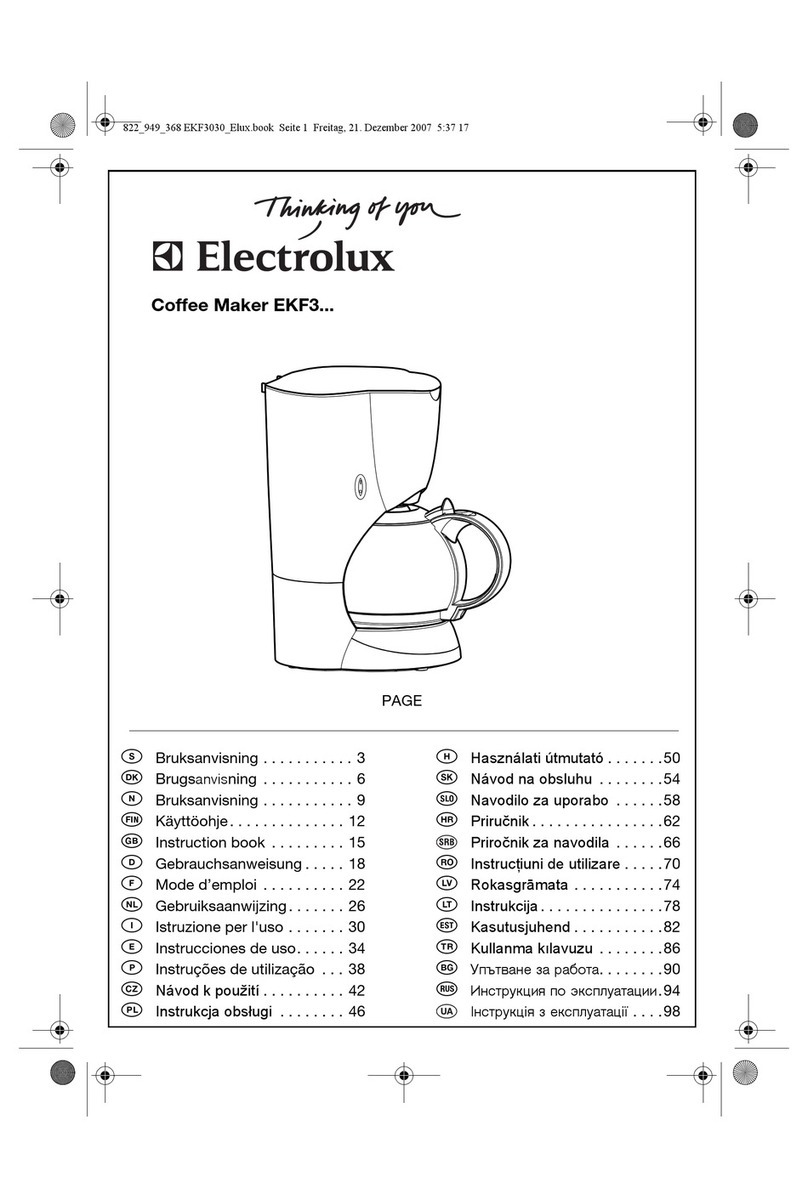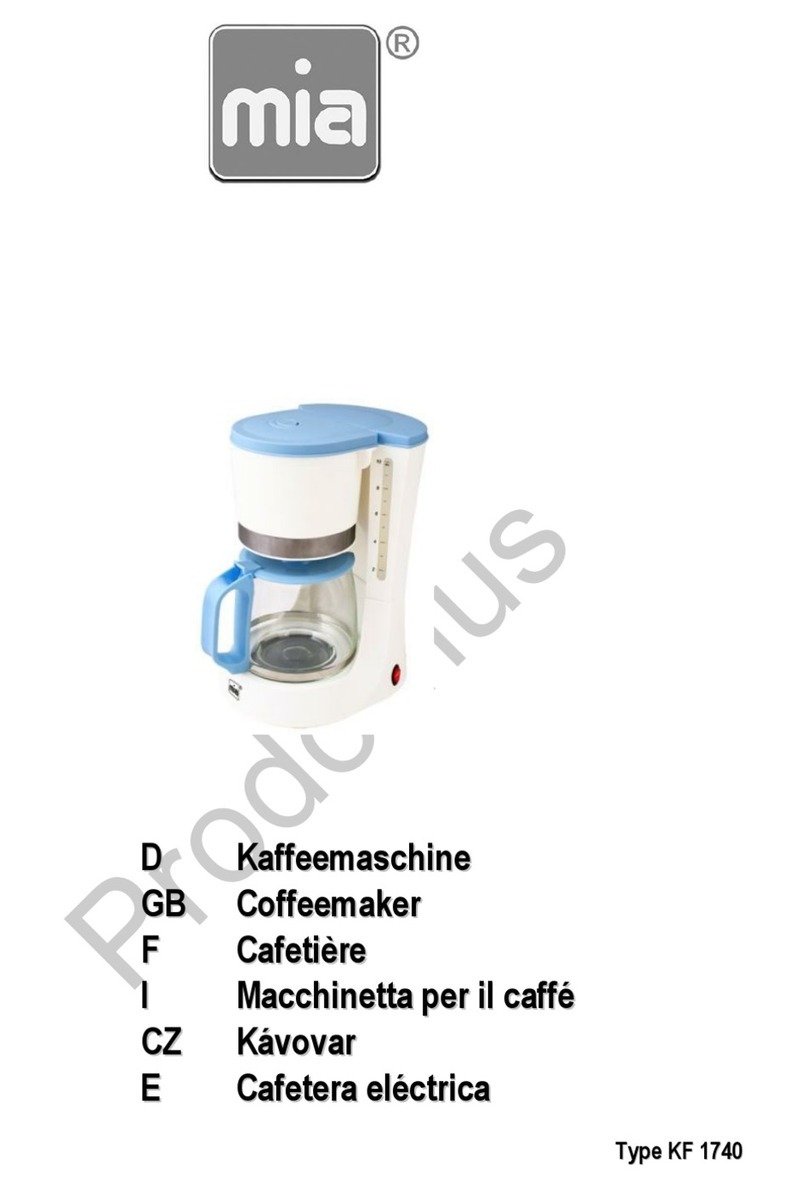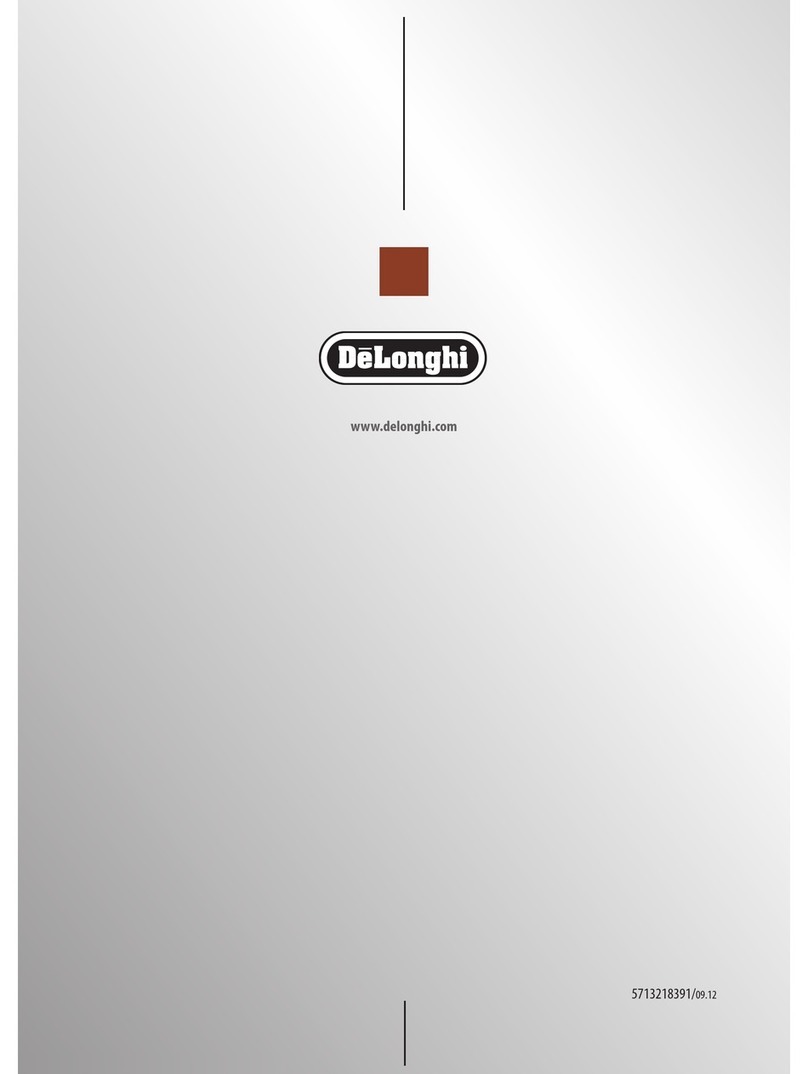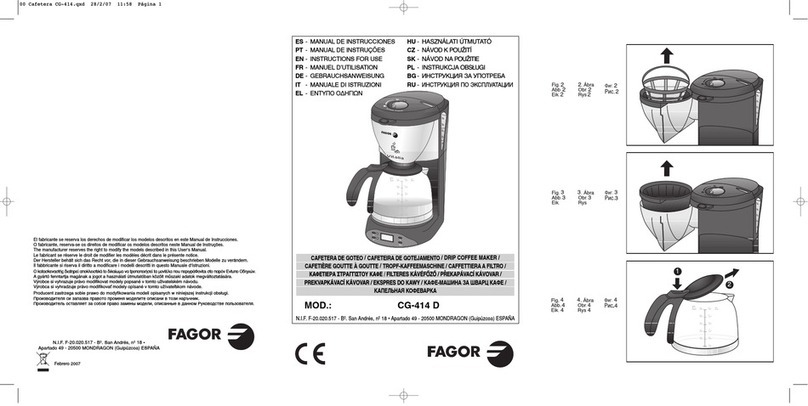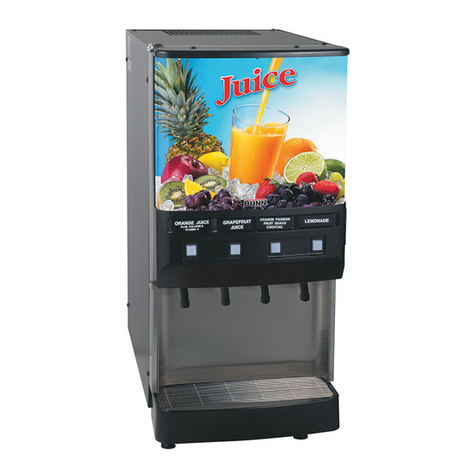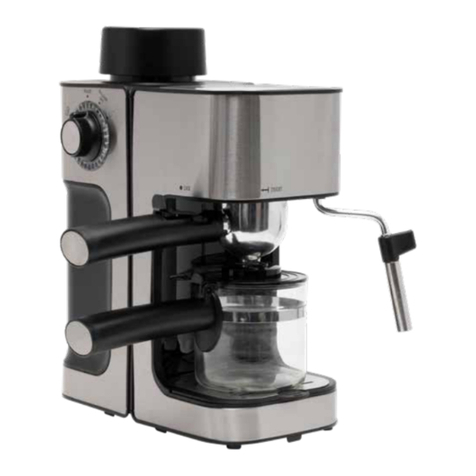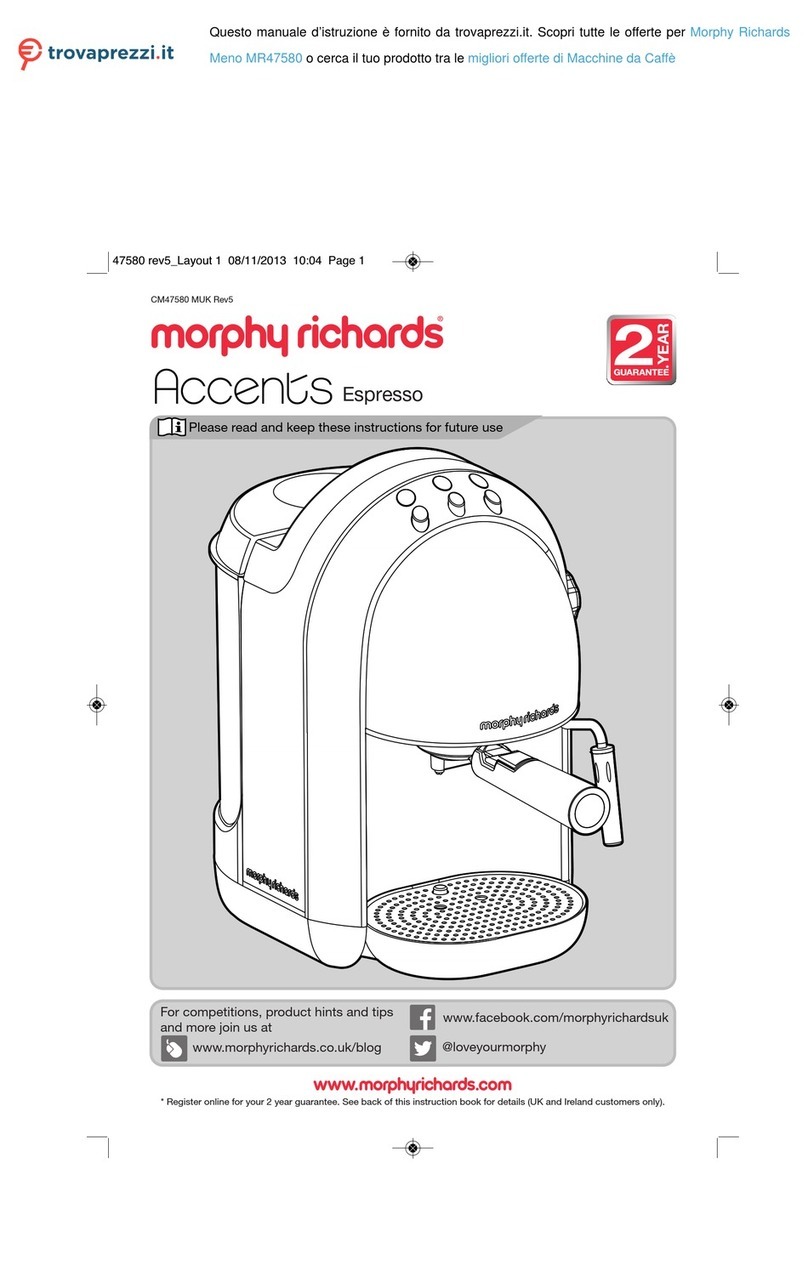
7
EN
5.3. FROTHING MILK FOR CAPPUCCINO
Add frothed milk to an espresso to make cappuccino. The steam wand can be used to
steam or froth milk.
TIP: If you need to prepare several cups of cappuccino, prepare the espressos
rst, then froth the milk for the cappuccinos in a larger jug.
1. Prepare espresso in a cappuccino cup (→ MAKING ESPRESSO).
2. Fill a frothing jug with about 150 ml of whole milk, or half-skimmed milk, for each
cup of cappuccino to be prepared. It is recommended to use cold milk directly
from the fridge (not hot milk).
3. Hold the frothing jug and insert the steam wand into the milk about 2 cm deep.
4. Press the Steam button. The button will start to blink.
5. When the Steam button stops blinking, slowly turn the Steam Control knob anti-
clockwise to start frothing the milk. The steam wand will produce steam. Use the
Steam Control knob to adjust the steam pressure.
6. Once the desired texture is obtained, turn the Steam Control knob clockwise to O
and remove the frothing jug.
7. To clean the steam wand:
■Carefully wipe the steam wand with a soft damp cloth to prevent milk from
sticking.
■Place an empty cup under the steam wand, turn the Steam Control knob anti-
clockwise to produce steam for a few seconds, then return the knob to the O
position. This procedure purges any milk residue out of the steam wand.
8. Pour the frothed milk into the espresso. The cappuccino is ready to serve.
9. Once nished using the espresso machine, press the On/O button to turn the
appliance o.
10. Allow the appliance to cool down before cleaning (→ CLEANING AND CARE).
WARNING:
■Never leave the appliance unattended during use. Turn o the appliance
after each use.
■Metal accessories and metal surfaces of the appliance become hot during
use and can remain hot for some time after use. Do not touch hot surfaces.
Always use handles or knobs.
■Beware of hot water and escaping steam from the group head and steam
wand during normal use. Always keep your face and hands at a safe
distance when using the machine.
5.4. AUTO-OFF FUNCTION
The espresso machine is designed with auto-o function. If no button is pressed within
25 minutes, the machine will turn o automatically.
6. CLEANING AND CARE
WARNING: Before cleaning, unplug the appliance from the power socket
and allow it to cool down completely.
WARNING: Never immerse the appliance, power cord or plug in water or any
liquid. Never rinse them under the tap.
IMPORTANT: Never use solvents, chemical or abrasive cleaning agents, wire brushes,
sharp objects or scouring pads to clean the appliance.
